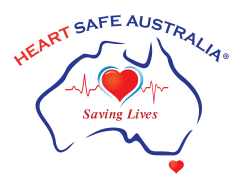HEART ATTACK vs CARDIAC ARREST
MOST people think a Cardiac Arrest is a Heart Attack and that performing CPR only will bring someone back to life.
Both statement are wrong!
HEART ATTACK
(CIRCULATION)
A blockage or narrowing of the coronary artery cuts off or reduces blood flow to the heart causing damage due to lack of oxygen.
Symptoms hours or days before are:
Chest Pain
Fatigue
Weakness
Nausea
Difficulty Breathing
WHAT TO DO WHEN YOU SUSPECT A HEART ATTACK
CALL 000
If you think someone may be having a heart attack, regard this as an emergency. Do not waste vital moments. Rather than going to a doctor’s clinic, take these steps:
Call 000
Ask for Ambulance Service
Report a possible heart attack
Give the person an aspirin if you have any unless the person has been advised not to take this particular medication
Make sure they rest quietly while you wait for transport or an ambulance
If an ambulance is not readily available (for example, in some rural areas) quickly notify the nearest hospital, health clinic or the person’s usual doctor for advice
* This advice is based on the Heart Attack Action Plan from Heart Research Australia.
CARDIAC ARREST
(ELECTRICAL)
The heart stops beating abruptly from a malfunction in the heart’s electrical system or a sudden change in the circulatory system.
Loss of consciousness & collapse:
Collapse
Unconsciousness
Not Breathing
No Pulse
WHAT TO DO WHEN YOU SUSPECT A CARDIAC ARREST
1. CALL 000
Make sure it is safe to approach:
Check for any response from the victim
Tilt their head back, lift their chin and check breathing
If breathing is absent or is not normal, CPR is needed
Call 000 in Australia or 111 in New Zealand and follow their instructions
If someone is there to help, ask them to call 000 in Australia or 111 in New Zealand for you and ask them to fetch an AED if possible
2. PUSH
Place both hands in centre of chest
Compress the chest to the rhythm of ‘Stayin Alive’
If you learnt how, provide 2 rescue breaths between every 30 compressions, otherwise push the chest continuously
Push hard. Don’t worry, you can’t do any harm
3. SHOCK
If an AED arrives, switch it on immediately and follow the instructions
Did You Know?
In Australia approximately 30,000 people sustain a Sudden Cardiac Arrest (SCA) outside of a hospital and are treated by emergency medical services (EMS) each year.
That’s 575 Australians suffering a Sudden Cardiac Arrest (SCA) every week and
ONLY 1 out of 10 WILL SURVIVE!
Heart Safe Australia - Saving Lives Across Australia
Raising Awareness and Education with the 3-Simple Steps to Potentially Save a Life in case of a Sudden Cardiac Arrest (SCA) Out-of-Hospital.
3-STEPS to Save Lives
ELEVEN Heart Safe Australia Life Saving Programs
ELEVEN Heart Safe Australia Life Saving Program Initiatives have been created to raise awareness and education to guide people across Australia to be READY, WILLING and ABLE to potentially save a life in case of a Sudden Cardiac Arrest (SCA) out-of-hospital.
Whether you are familiar with the 3-Steps to save a life and already have a defibrillator or AED, join our Heart Safe Programs to make sure you and the people around you are READY for such potentially very stressful life and death situation.





